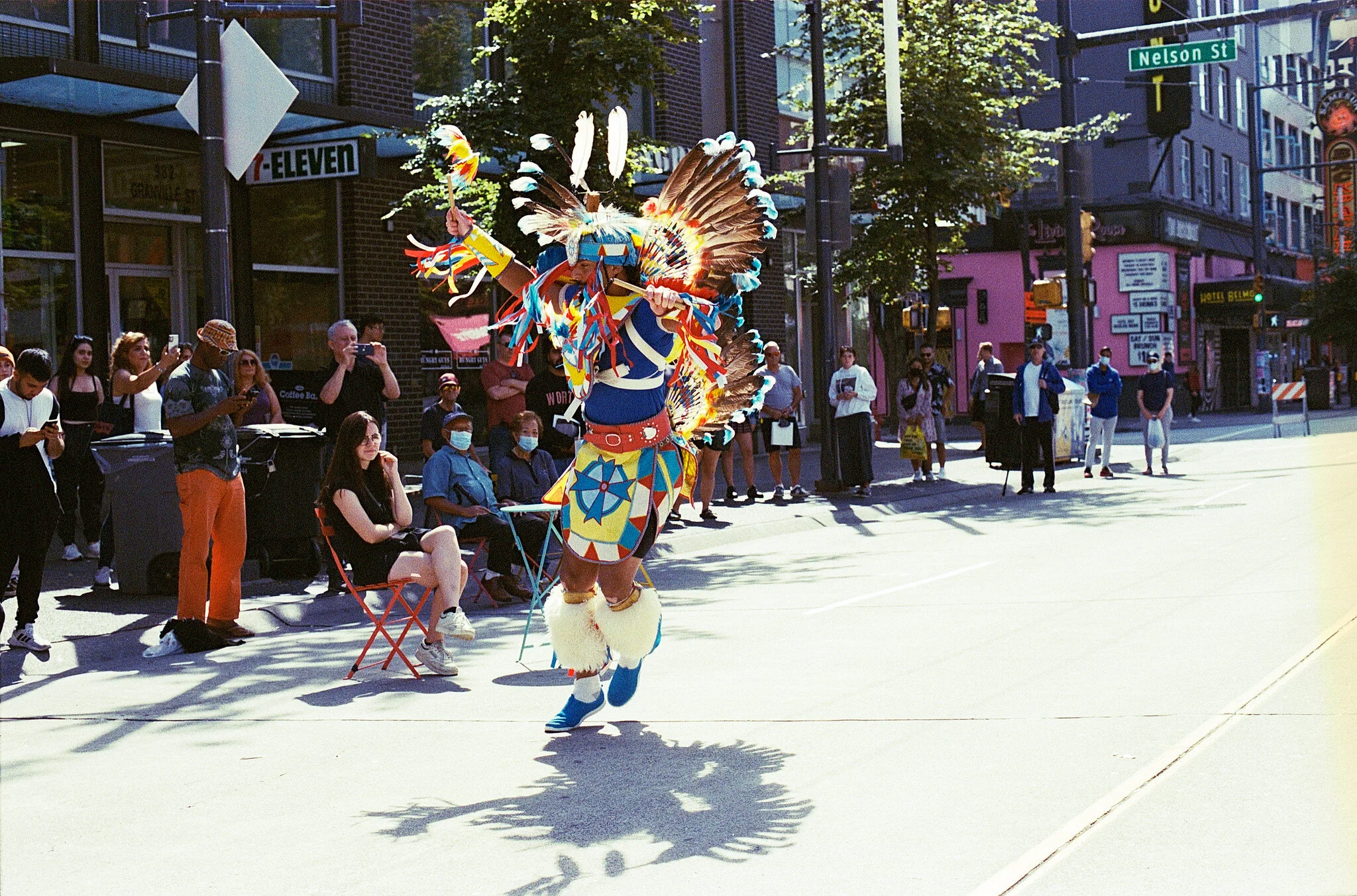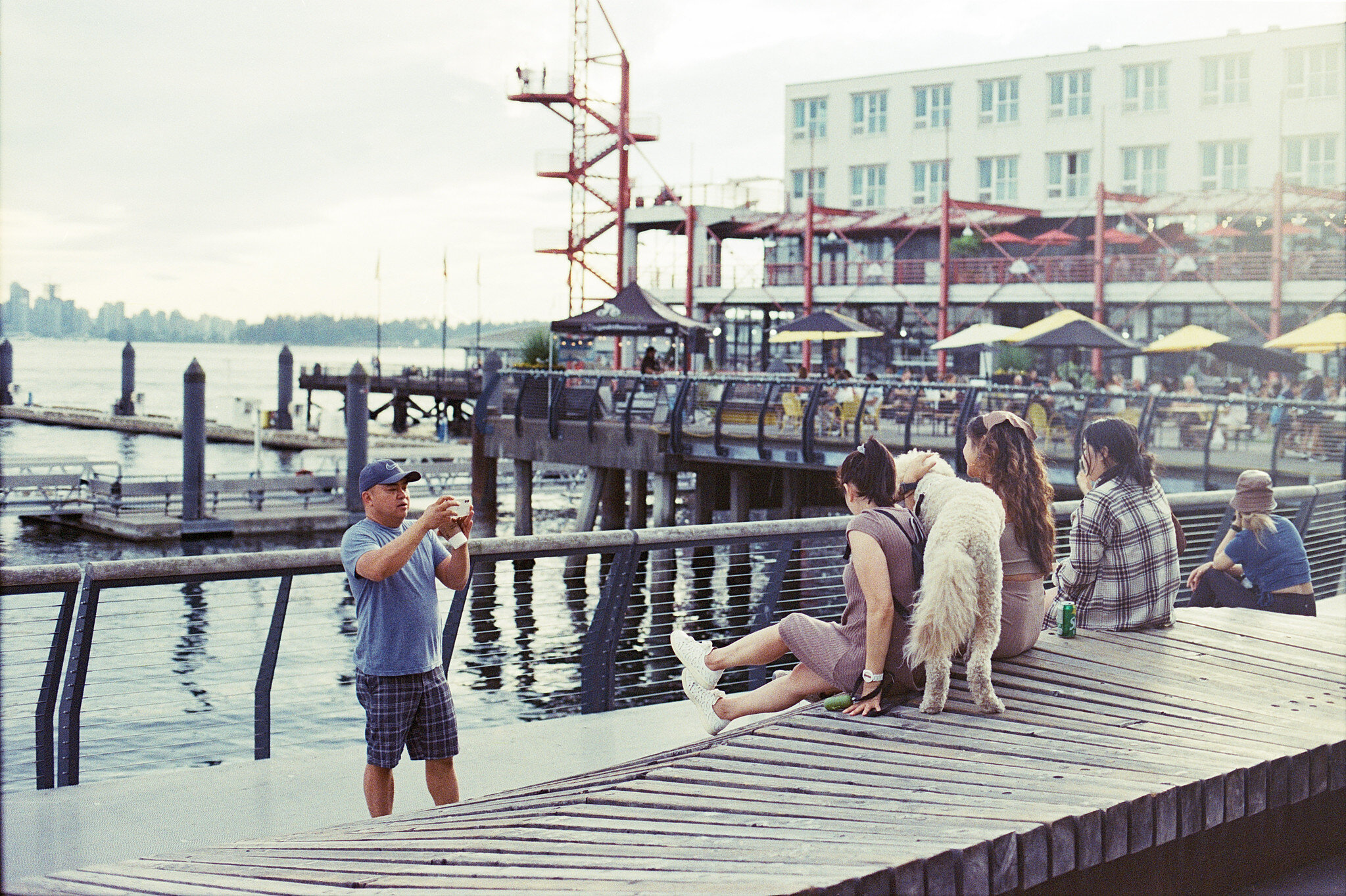Recently, I purchased a few Ilford Ilfocolor Rapid Retro disposable cameras from Rocket Repro in the Gastown district of Vancouver. I’ll admit, the fun, sporty looking retro 1980’s packaging was the first thing that caught my eye, but mostly I was intrigued with the idea of Ilford colour film. To be honest I didn’t even know Ilford ever made colour film. After some research, I learned that Ilford did indeed make colour film called Ilfocolor, for a period in the 1960’s. Ilford also made a more popular reversal film, called Ilfochrome. Ilford’s final production of Ilfochrome was in 2012. You can read about the history of these films here.
Interestingly, this new film contained within the Ilford Ilfocolor Rapid Retro disposable cameras is not slide (reversal film), it is 27-exposure ISO 400 colour negative film. I can’t find any information from Ilford’s websites revealing exactly what this film is. Is its emulsion based on the original formula from the 1960’s? I would love to find out more.
If you look at the technical specifications of the new Ilfocolor Rapid Retro disposable cameras, you will notice that they are similar to most other disposable cameras.
Optical Lens: 31 mm – F=11, 1 element
Focusing: Focus Free – 1m – ∞
Shutter Speed: Shutter 1/125s
I could, of course, shoot with one of these cameras as-is, but I love to experiment, and so I decided to remove the unexposed roll from the Ifocolor Retro camera and loaded it into one of my 35mm film SLRs, in this case, my Canon EOS 1 SLR. This would allow me complete control over my exposure settings, and would enable me to perform a more accurate test of this mystery film’s capabilities, without the limitations of the fixed settings of the disposable camera.
Removing the film from the Ilfocolor Retro disposable camera was quite simple. Like most disposable cameras, the manufacturer loads the film unwound. If you try this yourself, it is very important that you know this, because if you open your camera without advancing the whole roll back into the canister first, you will expose all of the film, and render it useless. So you MUST advance the film into the canister first. To do this, you can simply cover the lens with your finger and shoot every frame until there is no longer any resistance when you wind it, or usually after the 27th frame in the case of this particular camera. I recommend doing this in the dark, or in a dark bag (changing bag) as to ensure no light is getting past whatever you’re covering the lens with. When you reach the end, all of your film is wound back into its canister.
To open the Ilfocolor Rapid Retro disposable camera, you need to locate all of the plastic tabs and open them. Most of them are hidden under the paper decals on the camera body. You can peel off the paper to find them. I used a small screwdriver to depress the plastic tabs and open the camera. If you have no intention of reusing your disposable camera, you can easily force the camera open. Just be aware that some little bits will probably go flying around in every direction if you do this. There is also a AAA battery in the bottom of the camera, which you can reuse for other purposes.
I used a film retriever to pull the film leader back out of the canister, so that I could load it into my EOS 1 SLR.
After I loaded the Ilfocolor Retro film into my camera, I checked the ISO setting to ensure it was set to ISO 400.
I took advantage of a nice, sunny weekend, and shot some colourful events with this film, and I am very impressed with the results!
This film seems capable of reproducing a nice, broad colour palette, with bold, solid reds and yellows. I find it difficult to compare this film with any of the Kodak or Fuji range of colour negative films, as its look is quite unique. It may possibly be similar to some Agfa films I’ve seen, such as Agfa Vista, but Vista 200 has a distinct earthy tone to its reds and greens. This film also exhibits some decent, noticeable film grain. Not too much, just the right amount of film grain for my taste.
The Ilfocolor Retro 400 film certainly has a retro look to it, with the slightly simplified, bold colours, and film grain, but it doesn't remind me of 60’s era film, it reminds me more of 80’s era film.
As far as dynamic range, this film seems quite good. It is capable of maintaining details in the highlights, even with bright white fabrics, and the shadow details are good too, in the shade. Overall, this seems to be relatively high contrast film, but in all fairness, I shot most of the roll in bright sunshine. I shall experiment further with more lighting conditions when I shoot my next roll.
Here are some examples of my results with the Ilofocolor 400 Retro Film:





















